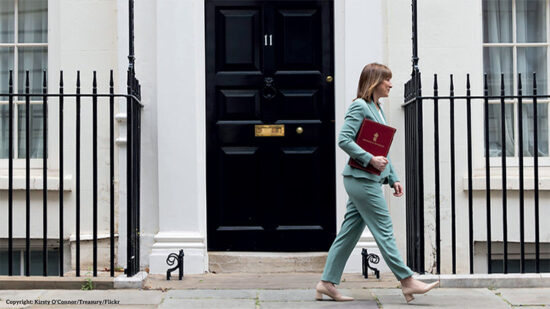Sterling
Sterling got a lift from the Sovereign risk issues in Europe last week to make new 20 month highs against the euro and 5 month highs versus the USD. The currency is also being helped better jobs data, retail sales numbers and a more hawkish tone on monetary policy from the Bank of England. It is now gaining a form of safe haven status, and will doubtless benefit still further if worries about Europe continue.
This week sees two important releases, with preliminary GDP on Wednesday and Gfk Consumer Confidence on Thursday. Provided there are no nasty surprises with these, we can see continued appreciation for sterling with levels of $1.6165 and €1.2392 potentially achievable, although the going will get tougher from here, particularly against the euro.
US Dollar
The US Dollar continues to be pushed around by events elsewhere in the world. European sovereign risk issues spooked investors sending the dollar higher as investors sought a safe haven only to then lose ground later last week as the markets view changed once again. Sterling performed particularly strongly following some good data releases and surprisingly hawkish Bank of England interest rate meeting minutes, while US data releases remain mixed.
The Fed has signalled on a number of occasions that US interest rates will remain low for some time to come and that QE is not yet off the table. This is discouraging investors from piling into the US dollar and this week’s meeting is not expected to bring any changes. However, with uncertainty in Europe, the US will continue to attract its fair share of safe haven money. We therefore expect a little more upside on GBP/USD, with resistance at $1.6165/75, but less chance for further gains unless the UK GDP number is strong and the Fed especially bearish.
Euro
The euro struggled last week after sovereign risk issues came back to haunt it. Spain was the culprit this time, and worries over their debt issues sent their bond yields rising sharply. Investors also moved out of equities and all major stock markets fell sharply as the euro plummeted across the board. EUR/USD touched the psychological $1.3000 support level while GBP/EUR hit 20 month highs at €1.2250 earlier today.
It is hard to get enthusiastic about the euro given the current uncertainties, so we feel that it will continue to come under pressure in the short term, with GBP potentially testing up to the June 2010 high of €1.2392. Support around €1.2000 is only likely to be tested if the UK Q1 GDP number is negative.
Having tested $1.3000 last week, the EUR/USD rate has since bounced two cents higher, but the overall direction should still be downwards. Resistance at €1.3305 should cap any further gains in the meantime.
New Zealand Dollar
The kiwi dollar ceded ground to most of the other major currencies last week as concerns about Europe’s debt crisis resurface and stock markets fall, reducing demand for high yielding risky assets.
The NZ$1.9664 level we discussed last week help until yesterday afternoon, but having broken higher, the next resistance level and short term target will be NZ$1.9911. That said, we would anticipate some consolidation of this move before there are further significant gains. Support comes in just above NZ$1.9500.
Australian Dollar
The GBP/AUD rate has pushed on to test A$1.5600 last week as Europe’s debt concerns, falling export prices and dovish Reserve Bank meeting minutes all weighed on the Aussie.
The markets have already priced in an interest rate cut for May so a soft inflation reading may not weaken the Aussie much further, although there is scope for a move up to the A$1.5675/97 region. Otherwise we expect a period of consolidation with support at A$1.5360/70.
Canadian Dollar
GBP/CAD dipped early last week after the Bank of Canada indicated interest rates may need to be raised as economic growth and inflation pick up; however, the pound surged higher during the second half of last week on better economic data, even as the USD/CAD rate fell further below parity.
GBP/CAD looks likely to test resistance at C$1.6030 again in the coming days, having failed earlier this month. Support remains at C$1.5718/C$1.5690 but will only be tested if the UK GDP number disappoints.
USD/CAD could test support at C$0.9865 with additional support at C$0.9840, eventually forcing the rate back above parity to C$1.0050/55. A break of this would be needed to indicate a move higher to C$1.0400.
Chinese Yuan
The USD/CNY rate continued in its recent ranges last week, spiking to the 6.3200 region last Monday following the PBOC decision to widen the permitted trading band, before falling back to trade between 6.3000 and 6.3100 through to today’s close.
The wider trading bank had no lasting effect last week, although the trend seems to be towards a slightly softer yuan rate. Nonetheless, appreciation should resume in due course, with the median analyst estimate suggesting a year end rate of 6.15.
Japanese Yen
The yen weakened sharply against the pound and dollar last week after the Bank of Japan indicated it will continue to actively curb the strength of the currency in order to promote economic growth, while relatively successful European debt auctions reduced risk aversion.
USDJPY needs to break above 82.05/10 to confirm the pair is on its way back to last month’s high at 83.75. With GBP/USD still rising, GBP/JPY could hit 132.55/65 before encountering resistance. Support is still around the 128.00 level.
South African Rand
The rand strengthened sharply last Tuesday, only to give back the gains as positive domestic data was outweighed by concerns about Europe’s ability to contain the resurgent debt crisis.
Despite the dip to R12.40 last week, the sharp return to the R12.50 to R12.60 range and the ongoing worries about Europe should keep the rand on the back foot; last week’s highs at R12.75 remain the short term target. The rand may however, fare better against the US dollar having failed to hold gains above R8.000 and now trading at R7.80.
For more currency data and information on how to assist your clients with their international money transfers, please visit the International Adviser Currency Zone powered by Moneycorp.








